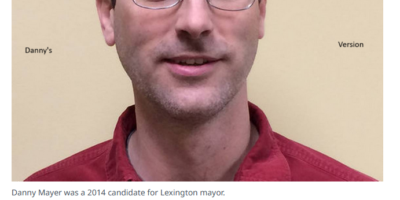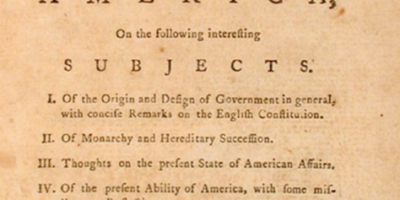By Joseph Anthony
Al’s Bar has gentrified Limestone.
For years I’d drive up Limestone on my way home, turning left on Sixth. But it got too depressing, and the ladies of the night (and day), loitering in front of the bar on the corner, trying to catch the eye of passing motorists, too sad looking. The city’s annual sting operation, where it would replace the regulars with fairly attractive police women, would boost the scenery for a few days. But when the police had finished gleaning the low end of the John-gene-pool, it was back to the regular routine.
The transformed Al’s Bar has changed all that. And now that the liquor store across the street from Al’s, (another fountain of drugs and prostitution) has been replaced by the Home-Grown Press, good old fashioned vice has had to go looking for greener (browner?) fields. I know Studs Terkel, a writer who celebrated the vitality of urban grit, wouldn’t like it. But I’m a bit more ambiguous.
It’s very hard to think intelligently and objectively about gentrification.
At the other end of Sixth, the old Rainbow Bakery factory has been transformed into the sixth street mini-brewery, with artists’ lofts, roller derby girls, and non-profits in the rest of the mega-building. It is helping to metamorphosize the north end of Jefferson.
I’m not ambiguous about Sixth Street: I’m very happy.
But the poor renters in the neighborhood are beginning to get nervous. Coolavin Apartments, the privately-owned complex with a low-rent clientele at the end of Sixth, is rumored to be up for sale. Coolavin is one of those places where we traditionally put our poor in Lexington—the western end of a Northside street, tucked in by the railroad. We stuffed the Hope Center for homeless men right across from it. Who would have thought we’d ever want that land? Whether the rumor pans out or not, the logic seems clear: the land, close to the new BCTC campus and a revitalized Jefferson, is now much too valuable for poor people.
These poor people aren’t hookers on Limestone, aren’t drug-dealers on Upper. They are just people who need low rents—people who work jobs that often make the city possible, but that don’t pay much.
We hide our poor in Lexington. We shuttle them off in outlying districts like Bluegrass Aspendale or Winburn. Until we need the land and then urban-renewal swathes through like a Webb brother through Main Street. The newer neighborhoods have no poor. It was the older models that used to keep them nearby in little out of sight streets up and down the Northside so they’d be handy as ready sources of maids and yards-men. The tiny bungalows of Smith Street and Wily serviced big-housed Sixth Street and Fayette Park.
Nowadays, thirty thousand or so would transform those bungalows into cute little cottages. But not for the poor.
Welcome to the other side of gentrification.
North of Center has had a running sort of battle with gentrification. In particular, it’s taken aim at the concept of changing one-way streets into two-way. I had always thought that one-way streets was generally a traffic-engineer’s idea of getting the suburbanites through the city’s center quickly with not much thought of what they did to it. Two-way streets slowed things down, made life more possible. But North of Center’s vehement opposition articles to the whole two-way concept have surprised me, making me think something else was going on.
I think that something else is fear of gentrification. Two-way streets make life possible, but for the newcomers to the neighborhood. We didn’t care if the poor didn’t like the one-way highways that cut through their neighborhoods. My suspicion is that the anger at the two-way street suggestions is really anger at the catering to the new genteelism, a reaction to the quite justified fear that city resources will be disproportionately spent for the sensibilities and tastes of the newcomers, and that the existing poor will be shoved aside. Two-way streets are seen as the camel’s nose under and upending the old neighborhood tent. The developer’s beak, so to speak.
This may be true. But here’s the rub: I think two-way streets make life better for everyone, even the poor. I like other aspects of gentrification, too. Some lower-income folks drink at the new Al’s bar alongside more than a few gentrification agnostics, listening to poetry being recited in the gallery. (Poetry wasn’t a big part of the old bar’s entertainment.)
I don’t need Stud Terkel grit, but I respect the rich diversity poor people bring. I want to fight to help the poor stay. I’m glad Al’s bar has shooed away the drug dealers. I don’t think the poor have to go away, too. It will be a challenge to find a way for them to stay as the neighborhood gentrifies. We should pick our battles, though. Raise our voices about the displaced Coolavin residents if the rumor proves true. But two-way streets? I doubt that having to look both ways on Limestone will matter to the poor, one way or another, especially now that most of the ladies have moved on to other blocks.




Billy Fuckin Mason
I’m with the writer on this one. And I’d like to add that fat white rich people are boring and do a lousy job at “gentrification”…whatever that is. (sounds just off racist, in some way, to me…(one could say North of Racist, I’d suppose)) Deep Ellum was destroyed of it’s charm by Main St USA gentrification and what’s left is nothing but a nice safe boring theme park. This is done in every city and every town. The only thing that keeps these boring people away from ruining our darker and artistic sides of town (nationally speaking) are drugs and prostitutes and other wild west gun slinging that I miss so dearly. You see, we were having all the fun.
So then gentrification sets in. Fat boring white people want what they will never have…a soul. But they, with their credit scores, leverage and business models (and of course the obligatory scale model in a plastic box in the foray) buy your block that you built up by squatting there and making something out of …well, the abandoned districts that fat white people didn’t want anyway, and tear it down to make way for more capitol investments than the likes of your silly little “Al’s Bar” (future tense). Behemoth and disgusting projects like “centrepoint” that are obvious or the slow lumbering silent “gentrification” that you talk about.
Don’t worry. All of Marty’s hard work will pay off in the beginning. He’s done wonders in that area for the people he cares about. Unfortunately it just makes it safe enough, and palatable enough for (sigh) fat rich white people to start getting big ideas about what their town oughtta look like…Another bloated disgusting extension of SCC. (I wonder what capitalist mega church has their sites on Turfland?) …Anyway. The rich throw stuff away, we pick it up, clean it, make it cool, something great …then they take it from you. First they buy the block, then they raise the rent.
So…when can we expect Al’s to close & be replaced by maybe another “tin-roof”?
I say KEEP IT DIRTY & DANGEROUS! It’s in your best interests. (Fyi I used to live on Twelfth & walked to & from the Dame on Fri, Sat nights. …Dan, why don’t you just stay under your rock, won’t you?)
Dan
” I know Studs Terkel, a writer who celebrated the vitality of urban grit, wouldn’t like it.”
Let’s not romanticize violence, drugs, and prostitution which could all be found at the old Al’s. Let’s also not fall into the trap of thinking that by cleaning up those problems that you are somehow hurting poor people through gentrification. Poor people don’t want to live under the thread of violence either. It is not like the cost of real estate has gone through the roof in that area either. I don’t think anyone is being pushed out unless you would call updating run down houses and reselling them, like Broken Fork does pushing people out.
David Shattuck
Mr. Anthony, I don’t believe NOC has taken an entrenched position on the 2-way street conversion debate. Rather, NOC has been kind enough to print my writings on the subject. I’ve studied and opposed conversion since 2001, long before the so-called gentrification of which you speak.
I love what we’re seeing on North Limestone, and I consider it proof that conversion to 2-way isn’t needed to make this, or any other downtown street, “walkable” and “livable”.
The bases for my objections to 2-way conversion are spelled out in detail, and have nothing to do with gentrification or spending city resources on the newcomers you speak of.
I would be happy to discuss these matters in depth with you at the forum (Al’s Bar?) of your choice.